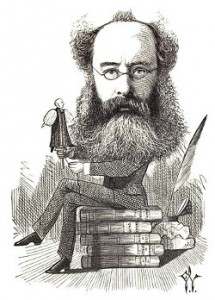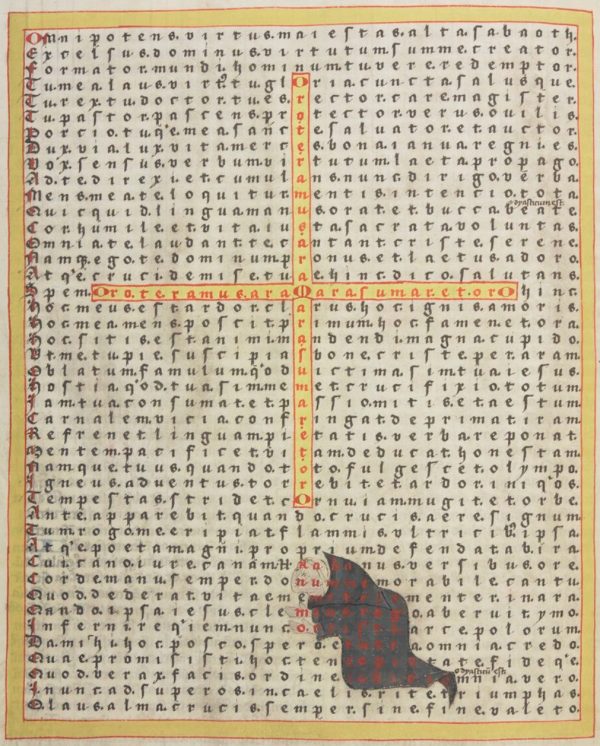A problem from the February 2006 issue of Crux Mathematicorum:
In a set of five positive integers, show that it’s always possible to choose three such that their sum is a multiple of 3.
A problem from the February 2006 issue of Crux Mathematicorum:
In a set of five positive integers, show that it’s always possible to choose three such that their sum is a multiple of 3.

The bird known as the red phalarope in North America is the grey phalarope in England — it bears red plumage during its breeding season, but the British see only its drab winter dress.
A poem by Lord Kennet, from my notes:
I live in hope some day to see
The crimson-necked phalarope;
(Or do I, rather, live in hope
To see the red-necked phalarope?)
Welsh mathematician Robert Recorde’s 1543 textbook Arithmetic: or, The Ground of Arts contains a nifty algorithm for multiplying two digits, a and b, each of which is in the range 5 to 9. First find (10 – a) × (10 – b), and then add to it 10 times the last digit of a + b. For example, 6 × 8 is (4 × 2) + (10 × 4) = 48.
This works because (10 – a)(10 – b) + 10(a + b) = 100 + ab, and it saves the student from having to learn the scary outer reaches of the multiplication table — they only have to know how to multiply digits up to 5.
(From Stanford’s Vaughan Pratt, in Ed Barbeau’s column “Fallacies, Flaws, and Flimflam,” College Mathematics Journal 38:1 [January 2007], 43-46.)
Edith Wharton was “reading” before she knew the alphabet. As a young girl she found Washington Irving’s 1832 book Tales of the Alhambra in her parents’ library and discovered “richness and mystery in the thick black type”:
At any moment the impulse might seize me; and then, if the book was in reach, I had only to walk the floor, turning the pages as I walked, to be swept off full sail on the sea of dreams. The fact that I could not read added to the completeness of the illusion, for from those mysterious blank pages I could evoke whatever my fancy chose. Parents and nurses, peeping at me through the cracks of doors (I always had to be alone to ‘make up’), noticed that I often held the book upside down, but that I never failed to turn the pages, and that I turned them at about the right pace for a person reading aloud as passionately and precipitately as was my habit.
Only later did she learn to value books for their substance rather than as vessels for her own imagination. “[M]y father, by dint of patience, managed to drum the alphabet into me; and one day I was found sitting under a table, absorbed in a volume which I did not appear to be using for improvisation. My immobility attracted attention, and when asked what I was doing, I replied: ‘Reading.'”
(From her 1934 autobiography A Backward Glance.)

Convalescing from pneumonia one winter, Mary L. Daniels occupied herself by collecting all the digressions to the reader in the 47 novels of Anthony Trollope. Victorian fiction permitted a writer to stop in mid-story and expound his own views, and Trollope indulged this privilege with staggering frequency — together his digressions fill nearly 400 pages of close-set type, practically a novel’s worth in themselves. Some examples:
“These digressions are pure Trollope — at least of that moment — undiluted by plot, character, theme, or modern exegesis,” Daniels writes. “By studying these digressions alone, we should be able to trace any changes in Trollope’s thinking without reference to what we think he meant or to what a particular character said or did.” The whole list is here.
When Raymond Smullyan was teaching probability at Princeton, he told one class about the birthday paradox — the fact that if there are 23 people in a room, the chances are greater than 50 percent that at least two of them share a birthday. There were only 19 students in the classroom, so he said that the chance that two of them shared a birthday was quite small.
One boy said, “I’ll bet you a quarter that two of us here have the same birthday.”
Smullyan thought about that for a moment and said, “Oh, of course! You know the birthday of someone else here as well as your own!”
The boy said, “No, I give you my word that I don’t know the birthday of anyone here other than my own. Nevertheless I’ll bet you that there are two of us here who have the same birthday.”
Smullyan took the bet and lost. Why?
Shozo Hayama spent 50 years collecting jinmenseki, rocks that resemble human faces, before founding the Chinsekikan (“hall of curious rocks”) in Chichibu, Japan, two hours northwest of Tokyo.
Inside are 900 such rocks, from Elvis and Jesus to E.T. and Nemo from Finding Nemo. The only requirement is that the effects occur naturally, without human artifice.
Hayama passed away in 2010, but his daughter keeps the museum running today.
(Thanks, Randy.)

In 840 the Frankish Benedictine monk Rabanus Maurus composed 28 poems in which each line comprises the same number of letters. That’s impressive enough, but he also added painted images behind each poem that identify subsets of its letters that can be read on their own.
The final poem of the volume shows Rabanus Maurus himself kneeling in prayer at the foot of a cross whose text forms a palindrome: OROTE RAMUS ARAM ARA SUMAR ET ORO (I, Ramus, pray to you at the altar so that at the altar I may be taken up, I also pray). This text appears on both arms of the cross, so it can be read in any of four directions.
The form of the monk’s own body defines a second message: “Rabanum memet clemens rogo Christe tuere o pie judicio” (Christ, o pious and merciful in your judgment, keep me, Rabanus, I pray, safe).
And the letters in both of these painted sections also participate in the larger poem that fills the body of the page.
(From Laurence de Looze, The Letter and the Cosmos, 2016.)

Iowa State University mathematician Alexander Abian was a quiet man with a bold idea: He believed that blowing up the moon would solve most of humanity’s problems. In thousands of posts on Usenet, he maintained that destroying the moon would eliminate Earth’s wobble, canceling the seasons and associated calamities such as hurricanes and snowstorms.
“You make a big hole by deep drilling, and you put there atomic explosive,” he explained in 1991. “And you detonate it — by remote control from Earth.”
“I was questioned about it,” wrote English astronomer Patrick Moore in Fireside Astronomy (1993). “I pointed out, gently, that even if the Moon were removed it would not alter the tilt of the Earth’s axis in the way that the professor seems to believe. Moreover, the energy needed to destroy the Moon would certainly destroy the Earth as well, even if we had the faintest idea of how to do it. The British Meteorological Office commented that a moonless Earth would be ‘bleak and tideless’, and a spokesman for the British Association for the Advancement of Science, struggling nobly to keep a straight face, asked what would happen if the experiment went wrong. Predictably, Professor Abian was unrepentant. ‘People don’t seem prepared to sacrifice the Moon for a better climate. It is inevitable that the genius of man will one day accept my ideas.'”
For better or worse, he maintained this position until his death in 1999. “I am raising the petulant finger of defiance to the solar organization for the first time in 5 billion years,” he said. “Those critics who say ‘Dismiss Abian’s ideas’ are very close to those who dismissed Galileo.”